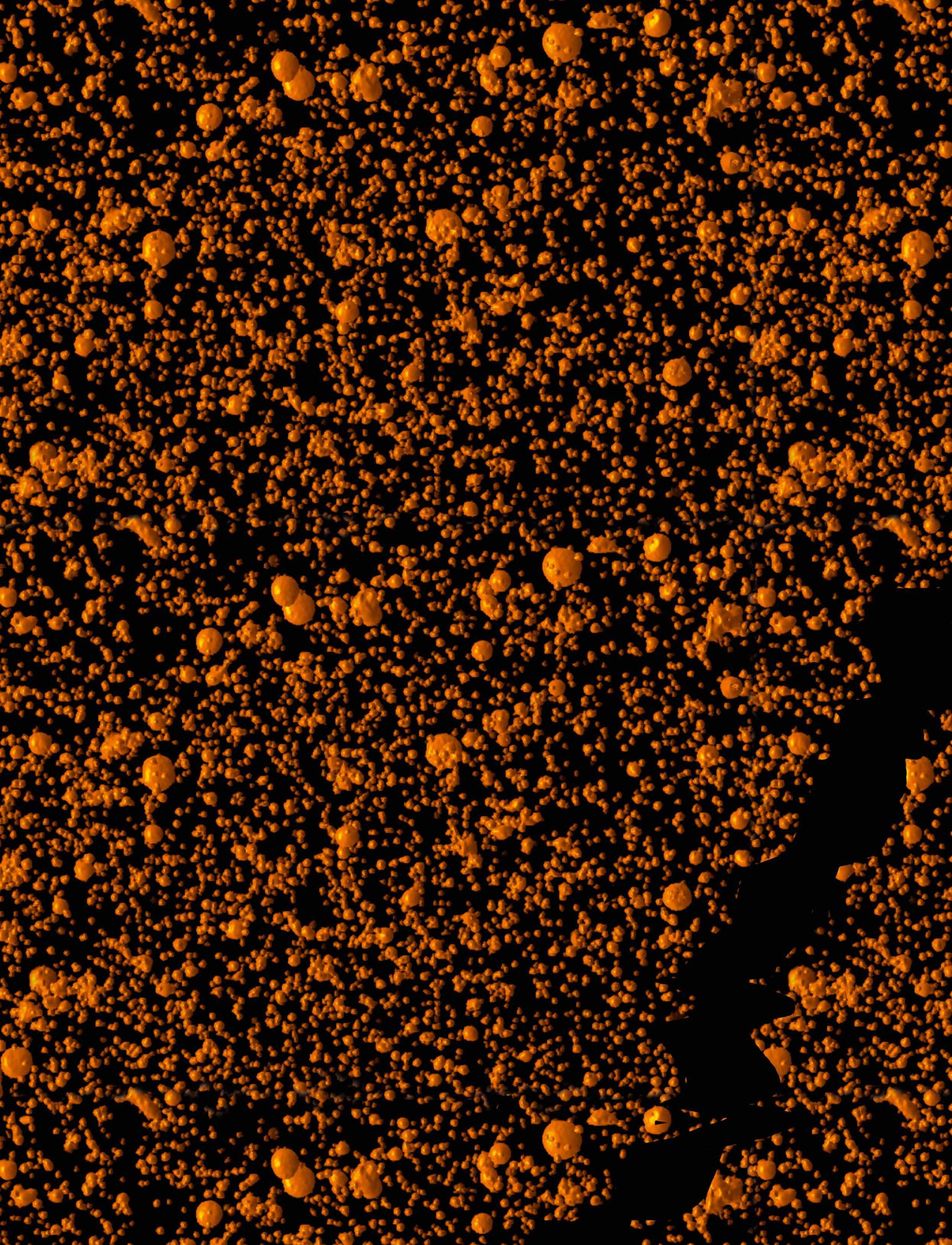Behind the deep water cycle Water is essential to life, yet we still don’t know how much of it there is on our planet, in particular how much water is stored in the Earth’s mantle. Alpine rocks provide evidence of how the deep water cycle works and how minerals are transformed as they are transported deeper into the Earth’s interior, topics that Professor Jörg Hermann is addressing in his research. The oceans cover
approximately 70 percent of the Earth’s surface, and it is possible to calculate how much water is stored in the world’s oceans, lakes, glaciers and other water sources. However, it’s less clear how much water is stored in the Earth’s mantle, below the ocean floor. “Estimates of how much water could be stored in the mantle vary between half an ocean mass up to nine times an ocean mass,” says Jörg Hermann, Professor of Petrology at Bern University, Switzerland. This is not liquid water in the mantle, but rather hydrogen coupled to oxygen in a mineral structure, which changes as minerals are transported through the Earth’s interior. “The capacity of these minerals to store H2O changes with pressures and temperatures as they move deeper into the Earth, and undergo what we call dehydration reactions. So they are transformed into more stable minerals for these temperatures and pressure conditions,” explains Professor Hermann. “The deeper they go, the less H2O the new minerals can incorporate.”
Deep water cycle This topic holds deep interest to Professor Hermann, who is the Principal Investigator of a research project investigating the Earth’s deep water cycle, looking at how water is transported into the Earth’s interior. Close to the Earth’s surface, weathering and hydrothermal alteration leads to the formation of hydrous minerals that can incorporate up to 12 weight percent of H2O. As these minerals are dragged down in subduction zones towards the interior of the earth by the movement of tectonic plates, water is liberated from them. That water returns to the Earth’s surface, either via hydrothermal activity or through volcanic activity above these subduction zones. “These are important means of returning water back to the surface. As dehydration reactions take place, small amounts of H2O are incorporated into newly formed minerals as a trace compound,” outlines Professor Hermann. By analysing Alpine rocks, Professor Hermann aims to shed new light on these processes. “With Alpine rocks that derive from former subduction zones we can see evidence of these different processes, from the uptake of water at the ocean floor, to their burial in different conditions,” he continues.
38
The deep water cycle. H2O is incorporated into hydrous minerals during seafloor alteration (1). The hydrous minerals are transported to mantle depth in subduction zones. Aqueous fluids are liberated during three main dehydration reactions of the hydrous minerals (2-4). H2O is transported back to the Earth’s surface with hydrous melts. Small amounts of H2O are retained in minerals such as garnet and olivine and are transported to the deeper mantle.
A variety of different types of rocks are being analysed within the project, including some that have been altered at the ocean floor, as well as others that have been buried to a depth of 100 km before eventually returning to the surface. Previous research has shown which rock samples have been at what depth, now Professor Hermann and his colleagues are looking to build further on these foundations. “Once we have a sequence of rocks we can then look to study the dehydration reactions and see how the water is liberated,” he says. One of the main goals of the project is to investigate how much water is retained in the minerals that are formed as a result of these dehydration reactions. “The retained water can then be transported much deeper, into the deep mantle, to be stored away for hundreds of million years,” explains Professor Hermann. For serpentinites, an especially water-rich rock type found in oceanic crust, there are several different reactions to consider in this respect. A first important dehydration reaction is thought to occur at a depth of about 70 kilometres, where the atmospheric pressure is
around 20 kilobars. “That is 20,000 times the typical atmospheric pressure at the surface of the earth, and the temperature would be in the region of about 500 degrees,” outlines Professor Hermann. A second important dehydration reaction occurs at a pressure of between 25-30 kilobars and a temperature of around 680 degrees, which causes hydrous minerals to break down, while Professor Hermann says there is also a third reaction to take into account. “The last of these reactions takes place at a pressure of about 35 kilobars, corresponding to a depth of around 100 kilometres, where the temperature would be about 750 degrees,” he says. A rock subjected to these kinds of temperatures and pressure conditions will change over time. The serpentine minerals, found relatively close to the earth’s surface, contain about 10 weight percent H2O, while olivine, pyroxene and garnet found further down towards the interior contain only 0.010.05 weight percent H2O. “We have used garnet to investigate these dehydration reactions and evaluate how much water can be incorporated
EU Research






























